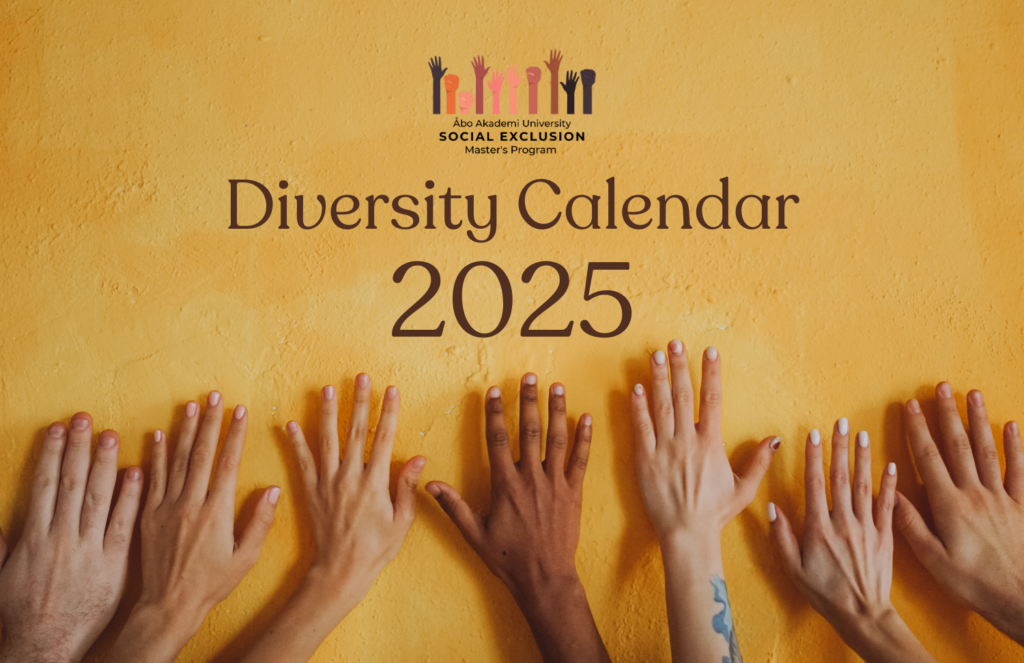
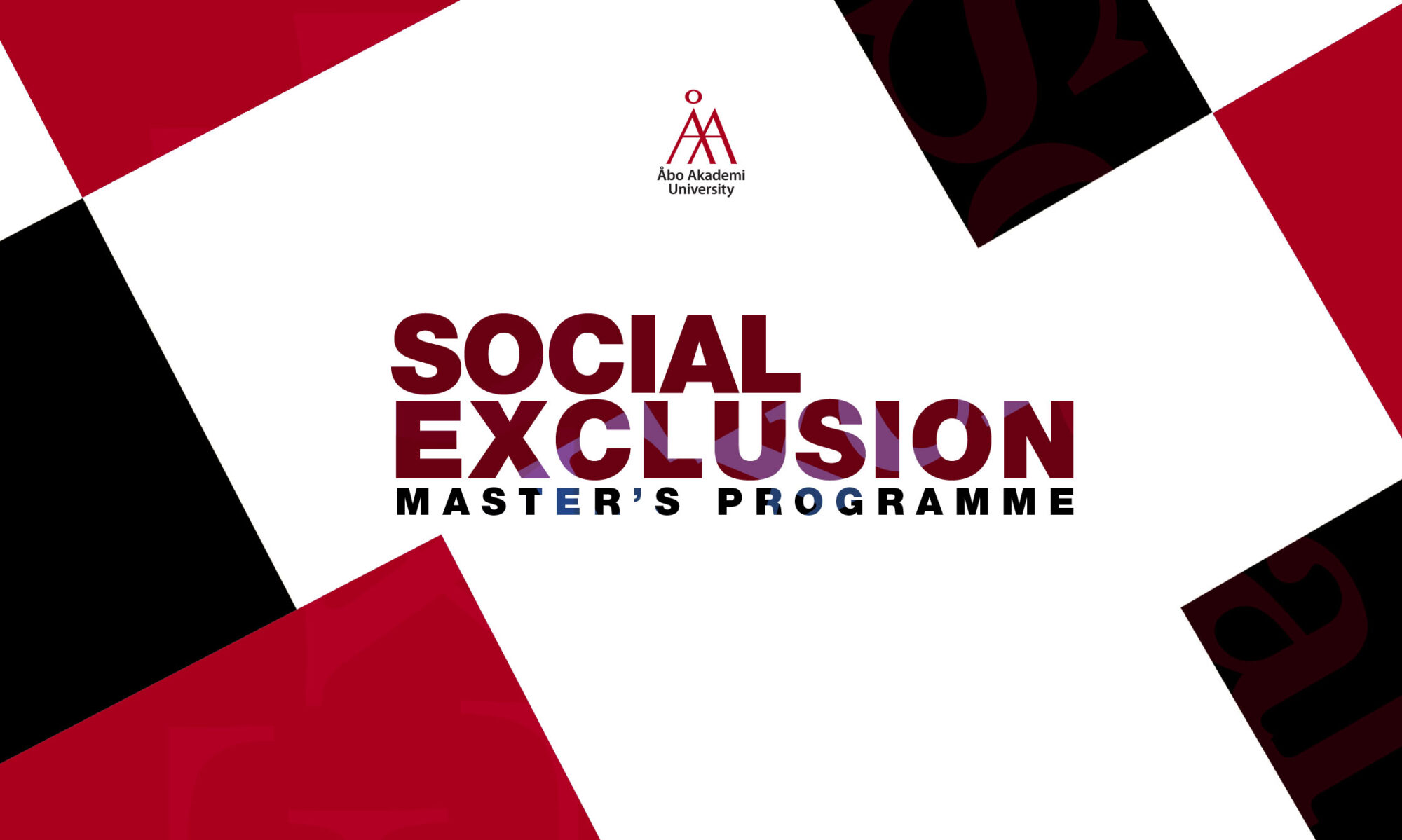
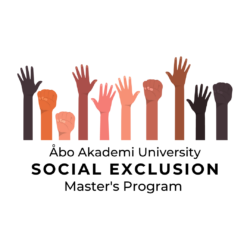
Social Exclusion Master's Programme
Åbo Akademi University
Starting January 1, 2025, Åbo Akademi University (ÅAU) will issue electronic degree certificates for all graduates. This transition aligns with national trends in Finland and aims to enhance the validation, security, and convenience of degree certificates.
According to the university’s official statement, the electronic degree certificates promise to be beneficial in many ways:
For those wondering about this transition’s effect on traditional graduation ceremonies, it will continue unaffected by the change. Additionally, the degree certificates will remain being issued in both Swedish and English, including all necessary documents such as the transcript of records and Diploma Supplement. Students can still request a certified copy of the degree certificate in paper form for specified needs such as pursuing doctoral studies abroad or applying for a job.
For more details, you can refer to the intranet or contact studinfo@abo.fi.
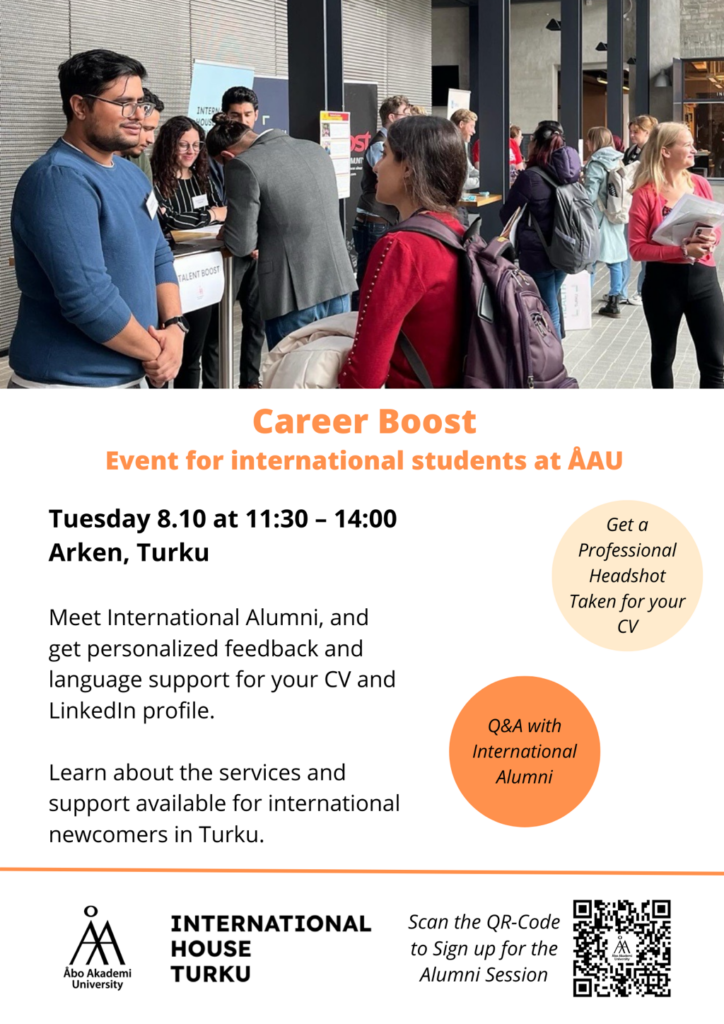
Finding your footing in the Finnish job market can be challenging, especially as an international student. Each country has its own unique job search landscape, and Finland is no exception. That’s why Talent Boost is hosting a Career Boost Event designed to help you sharpen your application materials, including your CV, cover letter, and LinkedIn profile. We’ll also have a professional photographer on hand to take high-quality headshots that you can use on your CV or LinkedIn.
In addition to the practical support, you’ll also have the opportunity to connect with Åbo Akademi alumni during our Alumni Coffee Hour. These alumni will share their personal experiences and career journeys, offering invaluable advice for your own job search in Finland.
From 12:00 – 14:00, join international ÅAU alumni for conversations about their career paths and job search tips.
Looking for feedback on your CV or LinkedIn profile? Bring a copy with you, and our Career Services team will provide personalized advice to help you stand out.
Need a professional headshot? A photographer will be on-site to take professional photos for your CV or LinkedIn profile.
Discover the services and support available to international newcomers in Turku from International House Turku representatives.
This event is part of the Talent Boost program at ÅAU, which aims to help international students succeed in their career journeys here in Finland. The event is open to all international (master’s, PhD, and exchange) students at Åbo Akademi University.
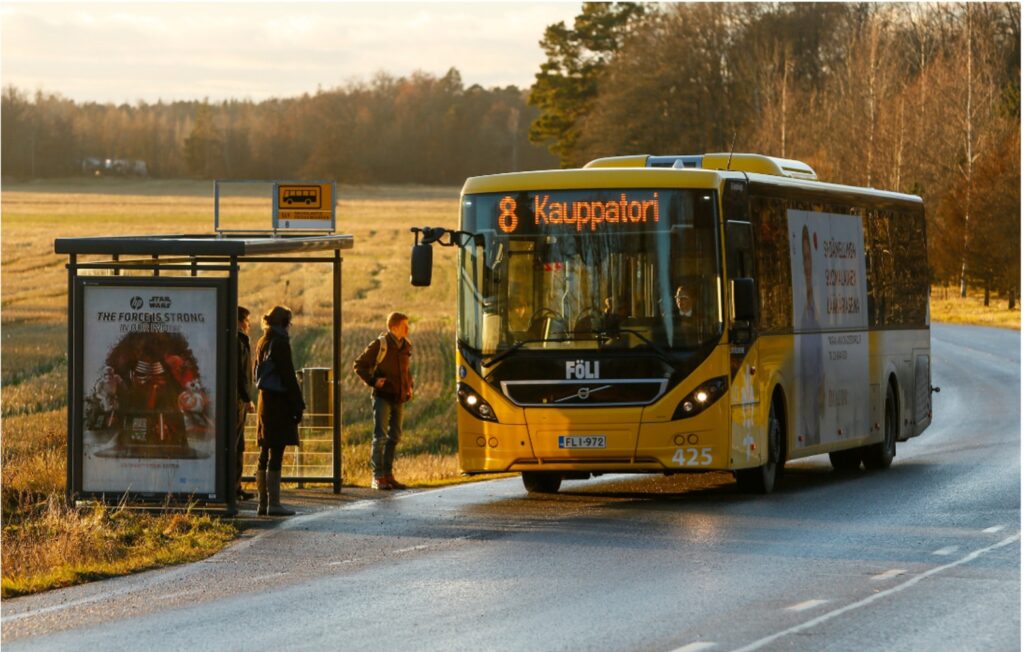
Cultural diversity is an integral component of every society. Culture extends beyond mere practices; it is a fundamental aspect of our identity and way of life. In the novel “The Razor’s Edge”, Somerset Maugham eloquently expressed that—
Men and women are not only themselves; they are also the region in which they were born, the city apartment or the farm in which they learnt to walk, the games they played as children, the tales they overheard, the food they ate, the schools they attended, the sports they followed, the poets they read and the God they believed in.
Embarking on an academic journey in the “Happiest Country” – Finland, I found myself grappling with cultural disparities that colored my everyday experiences leaving me both amused and perplexed.
On a radiant September morning in Finland, as the dawn broke over the horizon of Turku, my new home, I embarked on what should have been a routine journey to my university. It was my inaugural day, a seemingly simple task—boarding a bus—turned into a lesson in cultural nuances. There I was, meandering along the roadside, casually waving my hand in the air, trying to signal a bus in the way I had always known back home. To my astonishment, the buses paid no heed to my gestures, continuing on their routes as if I were invisible. Following a lengthy walk, I eventually found a bus stop and sat down by myself, waiting expectantly for the bus to come to a stop. Surprisingly, even at the bus stop, no buses came to a stop until another passenger also gestured to flag one down. My efforts to disembark met a similar fate; my pleas to the bus driver seemed to vanish into thin air. Amidst my confusion, I observed the bus’s three doors. Without giving it much thought, I attempted to board through the middle door, only to be met with a look of displeasure from the bus driver.
It was the “Survival Guide 2023–2024, Åbo–Vasa” that illuminated the mystery for me, unraveling the nuanced tapestry of Finnish public transportation etiquette and the vital importance of cultural acclimatization.
I learned that Bus stops in the area have distinct yellow signs, designating them for the City Transport Service. The numbers posted on these yellow-signed stops indicate the buses that serve each location. When preparing to board a bus, it is necessary to be at the appropriate bus stop and ready to signal the driver by waving a hand and must press the ‘stop’ button to disembark. I felt it interesting that passengers have a role in controlling the bus. Boarding is typically done through the front door; while exiting is facilitated through the middle and last door. I observed passengers forming orderly lines to board the bus. Queuing is an unspoken rule in Finland. I came to learn that Finns take queuing seriously, and it is important never to attempt to bypass the line. This encounter with structured protocol deepened my appreciation for the disciplined and organized Finnish way of life.
I had the fortunate experience of living with a Finnish family for three months. On the third evening, I was taken aback when my landlord requested that dinner be finished by 21:00. Back in my home country, that time was barely considered the hour to leave work, let alone sit down for a leisurely “Adda”. It was only later that I realized my landlord had kindly adjusted the usual dinner time by two hours for me, as Finns typically dine between 17:00 and 19:00. This dinner time brought back memories of the customs observed in an aristocratic farmer’s family, a time when switch could not turn on the light, the entire village would wind down after the Isha prayer, putting out their kerosene lamps and retiring for the night. Reflecting on those cherished memories fills me with nostalgia for the simplicity of youth.
Anticipating the joy of indulging in street food, a beloved pastime back home, I quickly discovered that I was now residing in an area devoid of beloved street foods like Chhola, Muri, Piyanju, Puri, Singgara, the iconic Chap from Mohammedpur, or the flavorful Tehari from Neelkhet, along with any other such “Aha” food items! The absence of street food stalls left me longing for the vibrant and diverse food culture I had left behind. Even the switch from rice, a dietary staple, to potatoes showcased the stark contrast in food preferences.
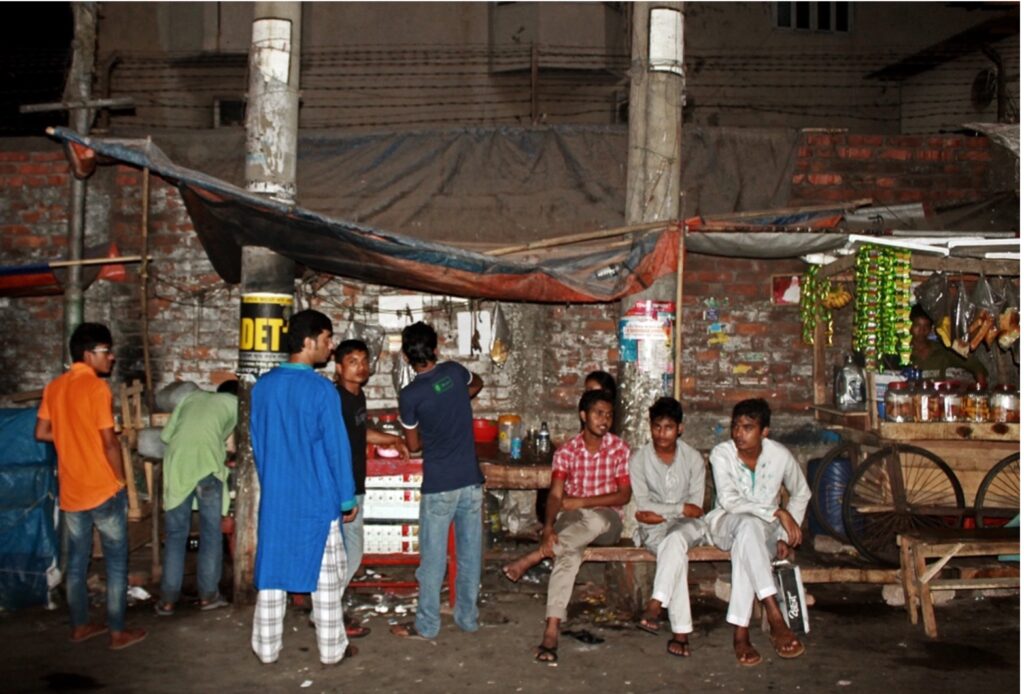
A universal quest for comfort led me to seek a cup of tea— perhaps the most common beverage in Bangladesh. However, my search for the familiar taste of milk tea proved fruitless in Finland. This contrast in beverage preferences highlighted the subtle but significant differences in daily life between the two cultures. The absence of milk tea, and the prominence of coffee as the preferred beverage presented culinary diversity. Typically, a Bangladeshi consumes five to seven cups of tea daily, whereas Finns may have as many as five cups of coffee each day.
The allure of Turku’s organized beauty concealed a sense of loneliness as I discovered a stark contrast to the bustling, talkative streets of Bangladesh. The absence of casual conversations and the vibrant street tea culture left me feeling isolated in this seemingly idyllic city. Growing up, the soundtrack of my life included bus horns, the hustle and bustle of passersby, traffic jams, and dust—elements that defined my daily existence. However, arriving here, I encountered a beautifully organized city, which, paradoxically, left me feeling isolated. In this aesthetically pleasing city, people rarely engage in spontaneous conversations, and the absence of a vibrant street tea culture heightened my sense of loneliness.
Through my experiences, I learned that forming connections in this culture takes time. “Finns have a self-conception and reputation for being reserved and sparing with words” (Countries and Their Cultures, 2006). Yet, once established, friendships with the Finnish people are enduring. Finland’s preference for explicit communication contrasts with the implicit communication style in Bangladeshi society. Edward T. Hall’s “High-context vs. Low-context communication theory is relevant in understanding communication style differences. I realized that for an organized society to thrive, there must be opportunities for interaction with neighbors, fostering a sense of belonging and community.
Humans possess a robust capacity for integration. Throughout this integration process, wherein the emphasis is on a “strong sense of their own group identity and an appreciation for other cultural groups” (Martin & Nakayama), I preserved my customary social interactions and dietary habits, opting instead to adopt an organized, punctual, and equally respectful way of life.
Still, I felt ashamed on my first day of trying to stop the bus anywhere on the street.
In my journey, I have discovered that the essence of “Happiest” lies in the bedrock of traits embedded in Finnish society—organization, punctuality, honesty, and equality. These fundamentals are not confined to the enchanting landscapes of Finland; they possess the transformative power to uplift any society. Yet, the true magic happens when these qualities intertwine with the fabric of social interactions and a robust sense of community within neighborhoods. Happiness, it seems, is not just a destination but a way of being, woven into the very essence of how we engage with one another and cultivate strong bonds within our communities.

It is important to acknowledge that the advent of disruptive technologies has changed every aspect of our lives in ways we never previously imagined. According to Business Insider, around August 2022, a Polish giant drinks maker, Dictador noted that it is poised to be the first company in the world to appoint an AI (Artificial Intelligence) robot as its ‘experimental’ Chief Executive Officer (CEO) (Mann, 2023). This giant step shows that the world is in the middle of the 4th industrial revolution and the only way forward for everyone to prepare for this radical change.
However, it is not all good news because there are some disadvantages of this innovation especially in the fact that it can foster a digital divide and challenge social inclusions. Like every other social and economic disparity, the International Finance Corporation (2023), predicts that the digital divide and social exclusion can further increase poverty levels and social inequalities in various areas of the world because access to information increases access to financial success (IFC, 2023)
As noted by Seeletsco and Kaplan (2022), even while digitalization is a worthy endeavour, it has had detrimental effects in several emerging nations, particularly in sub-Saharan Africa. The negative effects of technology adoption, such as social isolation and the digital divide, have impacted many people in developing nations.
Digital disparities across people, families, enterprises, and geographic areas are together referred to as the “digital divide” (Pick and Sarkar, 2016; OECD, 2001). As established by Taylor and Rasure (2023), the digital divide is a term used to explain the lack of access to digital technologies caused by either a lack of finance, or geographical, demographical, or technical limitations.
The term was popularized in the late 20th century to refer to the limited access to phones and other digital gadgets in various parts of the world. More recently, it is used to examine the lack of internet access and connectivity between males and females, developed or developing countries, urban and rural areas, and oceanic and landlocked areas in different locations of the world.
In 2022, 80% of Europeans and just 22% of Africans had access to an internet connection, indicating the continued disparity in internet penetration rates between continents (IFC, 2023). According to Deloitte (2021), the United States would have added 875,000 new jobs and over $186 billion in economic activity if there had been a 10% increase in internet availability in 2014.
These figures show the rate of the digital divide across continents and how it can contribute to the economic development of countries when it is given the utmost attention its solely deserves. Regrettably, social exclusion also has the same effect across continents.
As confirmed by Cuesta, López-Nova, and Niño-Zarazúa (2022), it is estimated that 2.33 billion to 2.43 billion individuals, or around 32% of the world’s population, are in danger of social exclusion. There are 1.3 billion of these individuals living in the South Asian, East Asian, and Pacific areas; 840 million of them reside in China and India alone. Conversely, the highest percentage of any area is seen in Sub-Saharan Africa, where 52% of the population is susceptible to being excluded.
Social Exclusion is defined by Walsh (2006) as the process of preventing someone from fully accessing rights, opportunities, and resources that are typically available to members of a different group and that are essential to social integration and the upholding of human rights within that specific group.
The relationship between poverty and digital exclusion is evident. According to Gunkel (2003) (and as already established above), sub-Saharan Africa, the most improvised region on the planet also has the highest rate of ‘digital divide’ and ‘social exclusion’ in the world.
Bridging the technology gap by combating the digital divide and social exclusion is directly related to bridging the poverty gap (Gunkel, 2023), and policymakers and governments across sub-Saharan Africa (most especially) and everywhere else need to understand and appreciate the importance of providing affordable digital technologies because of its power to combat crime, unemployment, poverty, insecurity, and foster economic development.
Nigeria, with its burgeoning middle class, nascent democracy, and youthful populace, is a shining star in sub-Saharan Africa. Nonetheless, the nation continues to confront difficulties in closing the digital gap and expanding employment, educational, and global economic prospects.
In Nigeria, for instance, the National Bureau of Statistics (2023) recorded the real Gross Domestic Product (GDP) for the Information and Communications Technology (ICT) sector for the second quarter of 2023 was 19.54%. In comparison to the 18.44% registered during the same time previous year, this indicates a rise in contribution year on year (YOY) (NBS, 2023).
The figures from the NBS above show the importance of technology and why there is a need for governments and policymakers to leverage digital innovations to deliver nation-building plans and national economic development projections. According to the IMF (2023), Nigeria is the largest economy in Africa and its most populous nation. So, if 20% of the Nigerian economy is contributed by digital technology with little or no governmental help. It is interesting to imagine the unlimited opportunities available in the ICT space when the government begins to seriously tackle the digital divide and social exclusion that is pervasive in Nigeria.
Edafewotu and Okocha (2022) believe that the challenges presented by the digital divide in Nigeria necessitate a comprehensive strategy that ought to enhance economic growth. It is advised that bridging the country’s digital gap is essential to achieving socio-economic progress in the country. Nigeria must close the growing digital divide that exists inside and between sub-Saharan African states, communities, and people.
To achieve this, the United Nations is actively helping countries with the provision of internet access and penetration through the Alliance for Affordable Internet (A4AI) which seeks to lower broadband internet costs in particular global regions, and Starlink which has sent satellites into orbit to deliver high-speed internet at cheap worldwide coverage.
Also, the Nigerian government has been collaborating with the Intel World Ahead Programme to increase possibilities of available when the poor have access to digital technologies. Tens of thousands of Nigerians are getting their first PC thanks to the Computers for All Nigerians Initiative (CANi), and schoolchildren in Nigeria are using computers for the first time. Additionally, instructors are becoming more adept at using technology to enhance teaching and learning (Intel Nigeria, 2023).
Another way to close the digital divide is by establishing internet centers that serve all local governments, implementing hands-on information and communications technology (ICT) courses in schools, and providing tax breaks to private businesses to incentivize them to invest in digital infrastructure (Olajide, 2023).
However, the Nigerian government can also learn from the government of the United States’ response to the digital divide and social exclusion roadmaps by providing laws and legislation like the Infrastructure and Jobs Acts (2021). The comprehensive package was signed into law by President Joe Biden on November 15, 2021, which aims to close the digital divide by investing $65 billion to provide rural America with high-speed internet.
Conclusively, it is crucial to remember that closing the digital gap is a complicated problem that calls for a multifaceted strategy. The leaders of Nigeria need to be more proactive in using information and communications technology (ICT) to increase opportunities and allow Nigeria to take center stage in international affairs.
the Nigerian government and other countries need to understand that bridging the technology gap is paramount to preparing the country’s young and vibrant population for the future as the world continues to turn to digital technologies in the global emerging business frontier occasioned by disruptive technologies and innovation.
—
Cuesta, J.; López-Nova, B.; Niño-Zarazúa, M., (2022). Social Exclusion: Concepts, Measurement, and a Global Estimate. Policy Research Working Papers;10097. © World Bank, Washington, DC. http://hdl.handle.net/10986/37594
Deloitte (2021), Quantifying the Economic Impact of Closing the Digital Divide. Deloittle. Available at: Deloitte: Quantifying the Economic Impact of Closing the Digital Divide – Press release | Deloitte US (Accessed 8 Nov 2023)
Edafewotu, E.; Okocha, D.; (2022). Bridging the Digital Divide in Nigeria. 33., The Journal of development communication.
Gunkel, D. J. (2003). Second thoughts: toward a critique of the digital divide. New Media & Society, 5(4), 499–522.
International Finance Corporation (2023), Creating Markets, Creating Opportunities. Available at: International Finance Corporation (IFC) (Accessed 8 Nov. 2023)
International Monetary Fund (2023), Regional Economic Outlook Report: Light on the Horizon? Available at: https://www.imf.org/en/Publications/REO/SSA/Issues/2023/10/16/regional-economic-outlook-for-sub-saharan-africa-october-2023 (Accessed 8 Nov. 2023)
Intel Nigeria (2023), White Paper: Bridging the Digital Divide in Nigeria. Available at: https://www.intel.com/content/dam/doc/white-paper/learning-series-bridging-digital-divide-nigeria-paper.pdf (Accessed on: 13th Nov. 2023)
Mann, J., (2023), The humanoid robot CEO of a drinks company says she doesn’t have weekends and is ‘always on 24/7’ Business Insider. Available at: https://africa.businessinsider.com/news/the-humanoid-robot-ceo-of-a-drinks-company-says-she-doesnt-have-weekends-and-is/41jq5dy (Accessed 8 Nov. 2023)
National Bureau of Statistics (2023), GDP Growth (Y-O-Y) Second Quarter. Available at: https://nigerianstat.gov.ng/ (Accessed 8 Nov. 2023)
OECD. (2001). Understanding the digital divide. OECD Digital Economy Papers, 49, OECD Publishing, Paris, France. https://doi.org/10.1787/236405667766.
Olajide, L., (2023), CLOSING THE DIGITAL GENDER GAP IN NIGERIA: WHAT MUST BE DONE. Aspilos Foundation. Available at: https://aspilosfoundation.org.ng/2021/02/01/closing-the-digital-gender-gap-in-nigeria-what-must-be-done/ (Accessed on: 13 Nov 2023)
Pick, J., & Sarkar, A. (2016). Theories of the digital divide: Critical comparison. In 49th Hawaii International Conference on System Sciences (HICSS 2016) Proceedings, IEEE, 3888–3897.
Seeletso, K.M., & Kaplan, A., (2022), Digital Transformation and Disruption of Higher Education , pp. 34 – 44, Cambridge University Press. DOI: https://doi.org/10.1017/9781108979146.006
Taylor K., and Rasure, K., (2023), The Digital Divide: What It Is, and What’s Being Done to Close It. Investopedia. Available at:https://www.investopedia.com/the-digital-divide-5116352#What%20Is%20The%20Digital%20Divide? (Accessed 8 Nov 2023)
Walsh, T (2006). “A right to inclusion? Homelessness, human rights, and social exclusion”. Australian Journal of Human Rights. 12 (1): 185–204. doi:10.1080/1323238x.2006.11910818. S2CID 150777458.
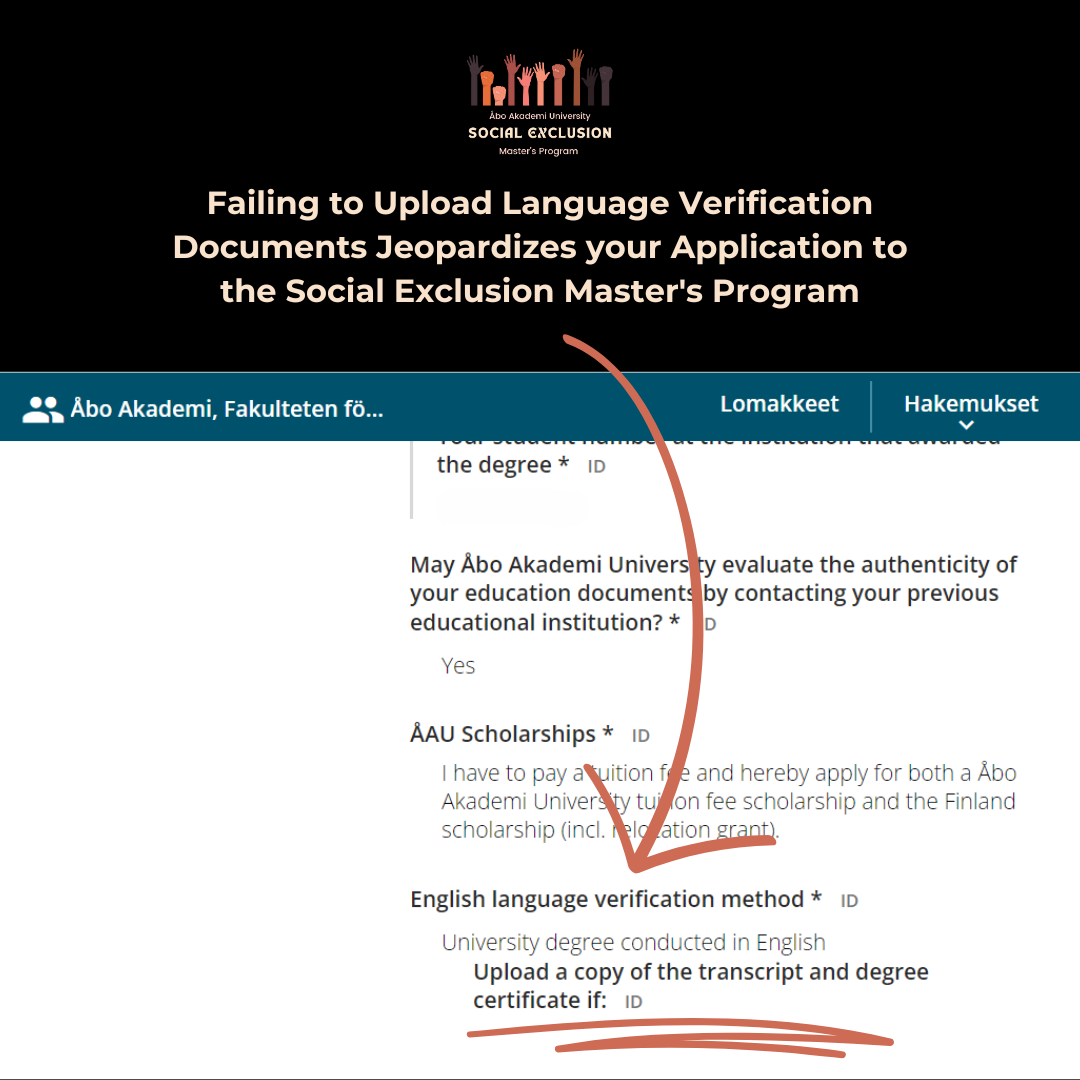
Applying to Åbo Akademi’s Social Exclusion Master’s Program is an exciting opportunity, but one common mistake can have significant consequences.
Many applicants, especially those opting for the “university degree conducted in English” option, mistakenly assume that uploading their degree certificate and transcript in the educational documents section is sufficient for language verification. Unfortunately, this oversight leads to the automatic dismissal of their applications, preventing them from progressing to the next stage.
Applicants who choose to prove their language proficiency through the “university degree conducted in English” option need to upload their degree certificate and transcript in the designated language verification section. Even if the same documents are requested in other sections, applicants must comply with each requirement separately to ensure their application is complete.
To safeguard their chances of a successful application to the Social Exclusion Master’s Program, applicants must meticulously follow the guidelines, ensuring the upload of all necessary documents and meeting each requirement in the application process.
For more information about the different ways to prove your language skills, check out 8 Ways to Prove Your English Language Skills for Admission in the Social Exclusion Master’s Program
For valuable insights and tips on what to avoid during the application process, check out 6 Don’ts When Applying for the Social Exclusion Master’s Program.
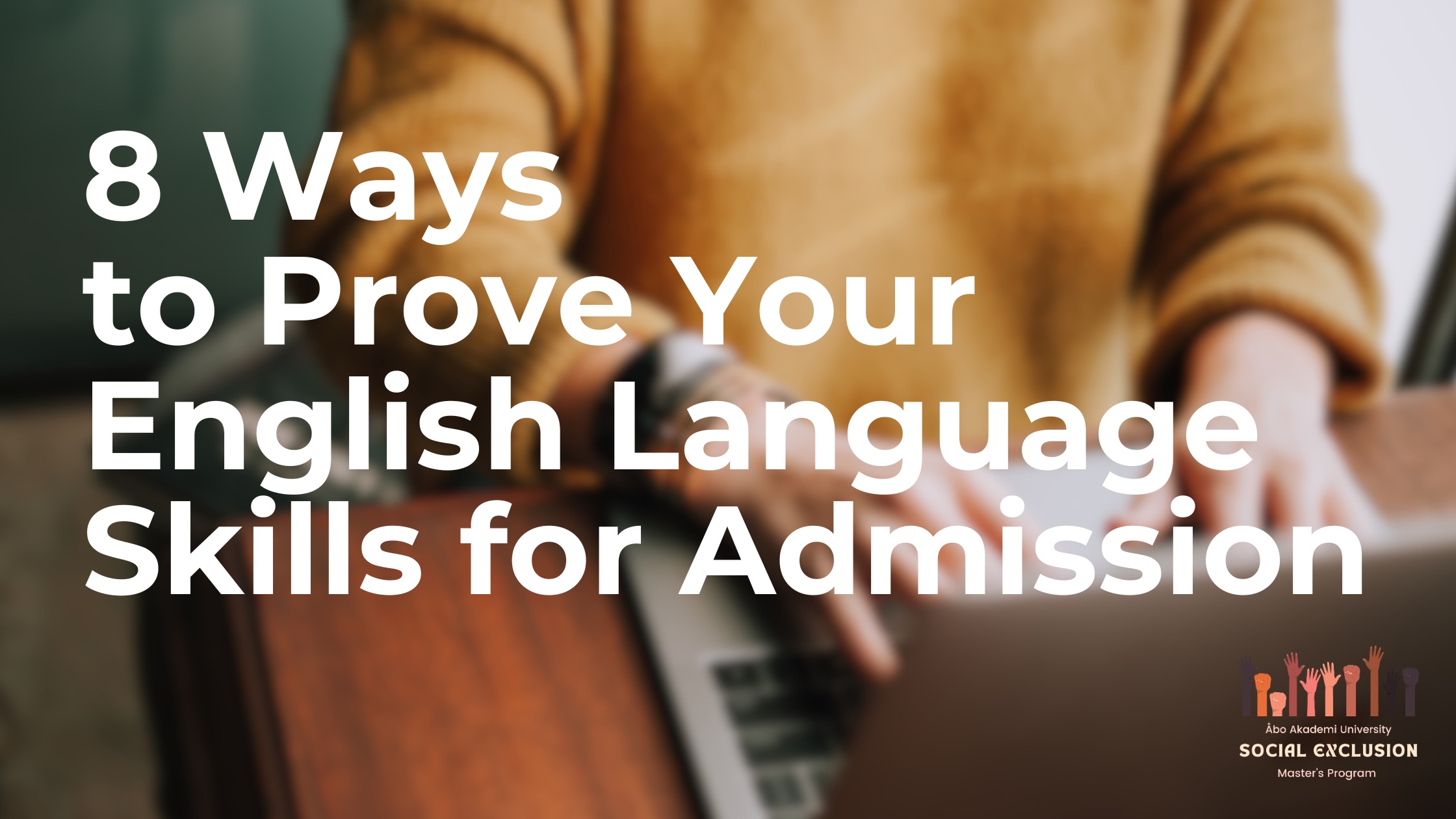
Welcome prospective applicants! If you are considering applying to the Social Exclusion Master’s Program at Åbo Akademi University, one crucial aspect you need to address is proving your English language skills. This guide will walk you through the various ways you can demonstrate your language eligibility to ensure a smooth application process.
Before diving into the details, it’s important to know the accepted methods for proving English language skills. Åbo Akademi University recognizes the following options:
For detailed information on the specific scores required for each test, please refer to the official Åbo Akademi University website.
If you were a former exchange student at Åbo Akademi University, you can use this experience as proof of language skills. Be sure to highlight this on your application and provide any necessary documentation.
For applicants who hold a degree that makes them eligible for the program but have no other means of demonstrating language eligibility, Åbo Akademi University offers a separate assessment option. The program will evaluate your language skills to ensure they meet the required standards for successful studies.
If you have completed your university degree in English from one of the following countries, your degree certificate and transcript of records must clearly indicate that English was the language of instruction. If not, you will need to provide a document from your university confirming the language of instruction.
| Antigua and Barbuda | Cameroon | Ghana | Kenya | Nigeria | Sierra Leone | Trinidad and Tobago |
| Australia | Canada | Grenada | Lesotho | Philippines | Singapore | Uganda |
| Bahamas | Dominica | Guyana | Liberia | Rwanda | South Africa | United Kingdom |
| Barbados | Eritrea | Hong Kong | Malawi | Saint Kitts and Nevis | Swaziland | USA |
| Belize | Ethiopia | India | Namibia | Saint Lucia | Switzerland | Zambia |
| Botswana | Gambia | Jamaica | New Zealand | Saint Vincent and the Grenadines | Tanzania | Zimbabwe |
For valuable insights and tips on what to avoid during the application process, check out our blog post on “6 Don’ts When Applying for the Social Exclusion Master’s Program“.

As we commemorate the 5th anniversary of the Social Exclusion Master’s Program at Åbo Akademi University, we reflect on the transformative journey from its inception to its current standing as a beacon of inclusivity and social change. We had the opportunity to connect with key figures who played pivotal roles in shaping the program — Peter Nynäs, the Faculty of Arts, Theology, and Psychology Dean, and Aminkeng A. Alemanji, the head of the Social Exclusion Master’s Program.
 In our correspondence with Peter Nynäs, the first head of the program, we delved into the early days when the idea of the Master’s Degree Programme in Social Exclusion was taking shape. The decision to start the program was initiated by the Åbo Akademi University board in August 2017, marking a significant milestone as the first international program in the Faculty of Arts, Psychology, and Theology.
In our correspondence with Peter Nynäs, the first head of the program, we delved into the early days when the idea of the Master’s Degree Programme in Social Exclusion was taking shape. The decision to start the program was initiated by the Åbo Akademi University board in August 2017, marking a significant milestone as the first international program in the Faculty of Arts, Psychology, and Theology.
The collaborative efforts of the history subject, studies of religion, gender studies, and systematic theology resulted in a program that aimed to bring together diverse resources for research and teaching. The interdisciplinary approach was underlined by a commitment to humanities, emphasizing the relevance of education and research in addressing societal issues from a global perspective.
Peter Nynäs notes that while the initial proposal had a different name, the emergence of the name ‘Social Exclusion Master’s Program’ resulted from the fact that similar concerns and topics were at the core of both academic and societal programs on social exclusion, hence, the name of the program. The establishment of the program also played a pivotal role in strengthening the Minority Research Profile, fostering a harmonious balance between research and education.
At the heart of the Social Exclusion Master’s Program’s inception was a profound understanding that social and cultural futures, alongside economic and political development, are intricately woven into diverse cultural processes that span both local and global dimensions. Guided by this foundational principle, the program took decisive steps to materialize its ambitions. Initiatives were set in motion to commence the program, securing teaching resources beyond initial plans, and ultimately welcoming the first group of students. This strategic approach marked the beginning of a journey dedicated to exploring, understanding, and addressing the complexities of social exclusion on a global scale.
 In our correspondence with Aminkeng Alemanji, the current head of the Social Exclusion Master’s Program, we gained insights into the major milestones and achievements of the program. He highlighted the journey from an idea conceived by Peter Nynäs to the program’s realization.
In our correspondence with Aminkeng Alemanji, the current head of the Social Exclusion Master’s Program, we gained insights into the major milestones and achievements of the program. He highlighted the journey from an idea conceived by Peter Nynäs to the program’s realization.
Alemanji underscores the uniqueness of the Social Exclusion Master’s Program. Not only is it committed to social justice as a remedy for social exclusion, but its vibrant curriculum, taught by outstanding teachers from around the world, is what sets it apart. Graduates leave not only with academic knowledge but also with valuable work-life skills.
Being a multidisciplinary MA program, SoEx offers students a chance to explore different perspectives on social exclusion, fostering a broad understanding of this complex subject. The program’s emphasis on unity and familial bonds among students contributes to a supportive learning environment.
The program’s growth is evident in the increasing number of students. Starting with a modest number in the first year, the program now boasts 35 students, showcasing its appeal and relevance. Alemanji emphasizes that SoEx was the first program at ÅAU to abandon the rigid language requirement policy to a more forward-thinking and equitable language policy exemplifying the program’s commitment to inclusivity.
Aminkeng A. Alemanji also discussed how the program has evolved to meet the changing needs of students and society. Graduates returning as program assistants have provided valuable insights for program development. The curriculum now includes two work-life-related courses, offering students opportunities to develop professional and entrepreneurial skills through mentorship programs and workshops. Moreover, annual antiracism seminars, organized by students, serve as a platform to address social exclusion-related issues in society.
The journey of the Social Exclusion Master’s Program is not merely a reflection of the past five years but a testament to its enduring commitment to inclusion and positive change. Since its inception, the program has grown and evolved, breaking barriers and fostering an environment where diversity is celebrated, and societal challenges are addressed with academic rigor.
As we look ahead, the Social Exclusion Master’s Program remains dedicated to shaping future leaders equipped with both academic knowledge and practical skills. The program’s commitment to social justice, its multidisciplinary approach, and its emphasis on unity within the student community set a standard for excellence.
Here’s to many more years of growth, learning, and impactful contributions as the Social Exclusion Master’s Program continues to shape a brighter, more inclusive future.
On Monday, October 23, 2023, at 13:00, the doctoral defense of Martins Kwazema is scheduled to take place at the Helikon Auditorium in Arken, Turku.
Martins Kwazema’s academic journey with the Social Exclusion Master’s Program has been nothing short of remarkable. His roles as a research assistant and guest lecturer have allowed him to share his expertise and inspire countless minds. His co-editorship of “Contemporary Discourses in Social Exclusion” underscores his dedication to exploring the complexities of this vital subject.
But it’s Martins’ doctoral research that takes center stage on this special day. His research delves into Ghana’s December 31st Revolution (1982-1992), revealing the paradoxical nature of its “economic miracle.” Martins Kwazema’s doctoral defense promises to be a thought-provoking exploration of a critical period in Ghana’s history.
Save the date, and let’s come together to celebrate Martins’ accomplishments and engage in a stimulating discussion about Ghana’s past and its implications for the present and future. See you there!

The Social Exclusion Master’s Program is proud to announce a transformative change that embodies our commitment to fostering inclusivity in higher education. This reform is a response to the voices of the Social Exclusion students who have passionately advocated for a more equitable language policy.
For some time now, students of the Social Exclusion master’s program have raised concerns about the existing admission language requirements, which were perceived as Euro-centric gatekeeping mechanisms. In open letters written in 2021 and 2022, students of the Race, Racism, and Antiracism course criticized the university’s admission language policy that favors European students while placing those from countries with English as the language of education at a disadvantage.
Now, we are happy to announce that their advocacy and dedication have paid off. The Rector of Åbo Akademi University, Professor Mikael Lindfelt, signed a change in the admissions language policy. In the coming year, Åbo Akademi University is expanding the list of countries outside Finland, the EU, and the EEA whose English-language higher education is recognized as sufficient proof of English proficiency for admission. This expansion aims to create equal opportunities for applicants from a wider array of countries.
|
Antigua and Barbuda |
Cameroon | Ghana | Kenya | Nigeria | Sierra Leone | Trinidad and Tobago |
| Australia | Canada | Grenada | Lesotho | Philippines | Singapore | Uganda |
| Bahamas | Dominica | Guyana | Liberia | Rwanda | South Africa | United Kingdom |
| Barbados | Eritrea | Hong Kong | Malawi | Saint Kitts and Nevis | Swaziland | USA |
| Belize | Ethiopia | India | Namibia | Saint Lucia | Switzerland | Zambia |
| Botswana | Gambia | Jamaica | New Zealand | Saint Vincent and the Grenadines | Tanzania | Zimbabwe |
Degrees completed in English at the bachelor’s, master’s, or doctoral level from these countries will now be accepted as sufficient proof of English language competence. To ensure that this new language requirement model is effective and responsive to the needs of our diverse student body, Åbo Akademi University will evaluate its impact after this application round. In the coming year, both Åbo Akademi University and the University of Helsinki will pilot this new policy, with the intention of refining and enhancing it based on applicant feedback and experiences.
At the Social Exclusion Master’s Program, we firmly believe that education should be a vehicle for breaking down barriers, not erecting them. This policy reform signifies a vital step towards a more inclusive and equitable academic environment. We eagerly anticipate welcoming a diverse cohort of students who will bring their unique perspectives and talents to our vibrant community. Through the scholarship in the Social Exclusion Master’s Program, we can forge a socially just and inclusive world.
We extend our sincere gratitude to the students, Emilia Plichta, Jan Louie Uy, Niki Panera, Vera Linden, Adelina Appel, Godfred Gyimah, Maryam Lashgarian, Oghenetega Oke, and Sandis Sitton, who called for change and courageously raised their voices against the discriminatory admission language policy.